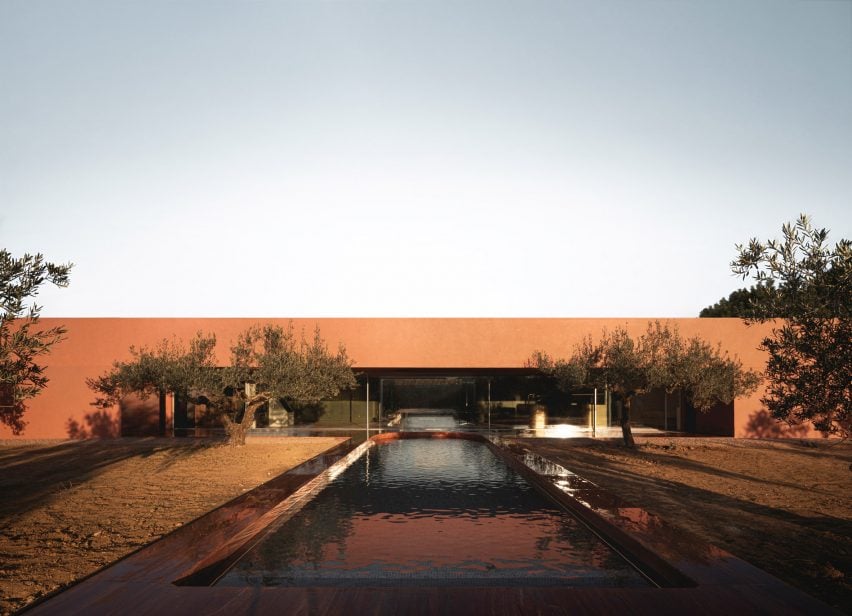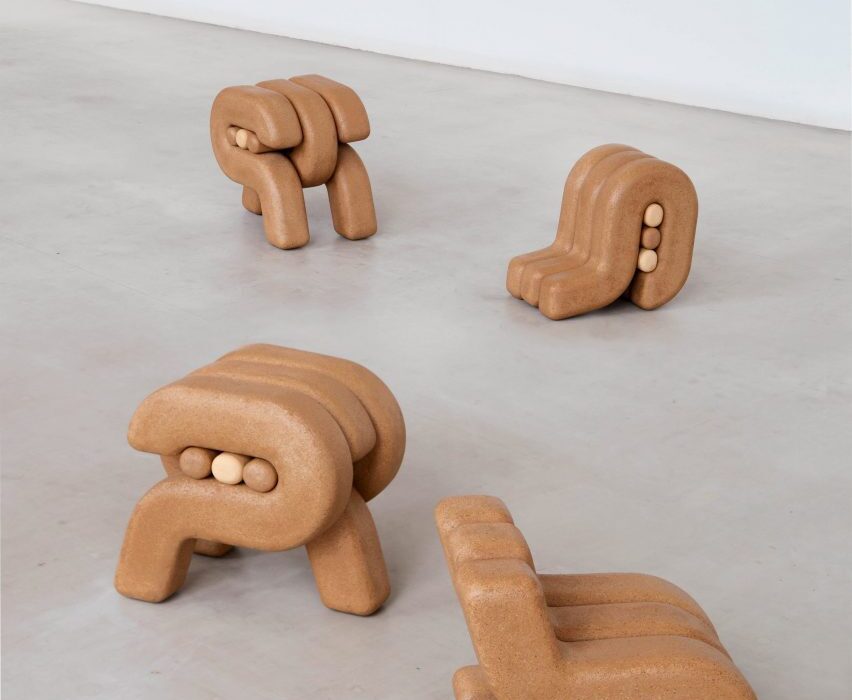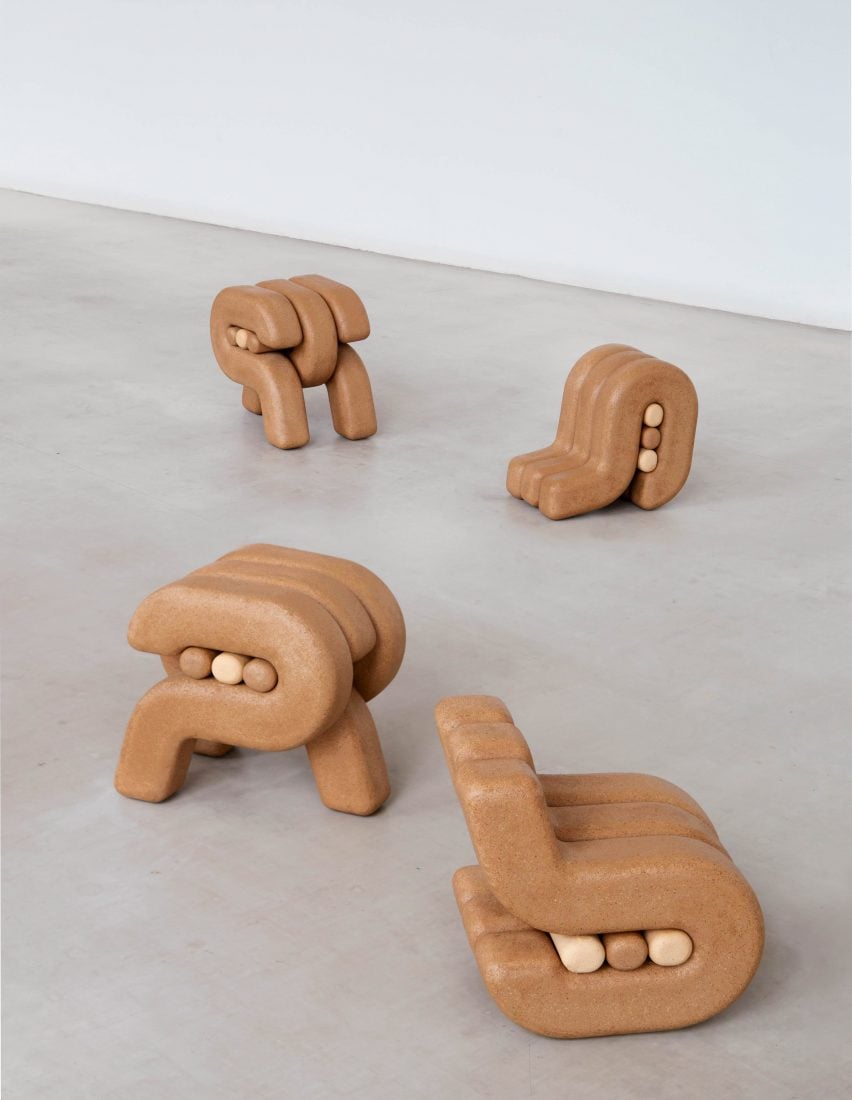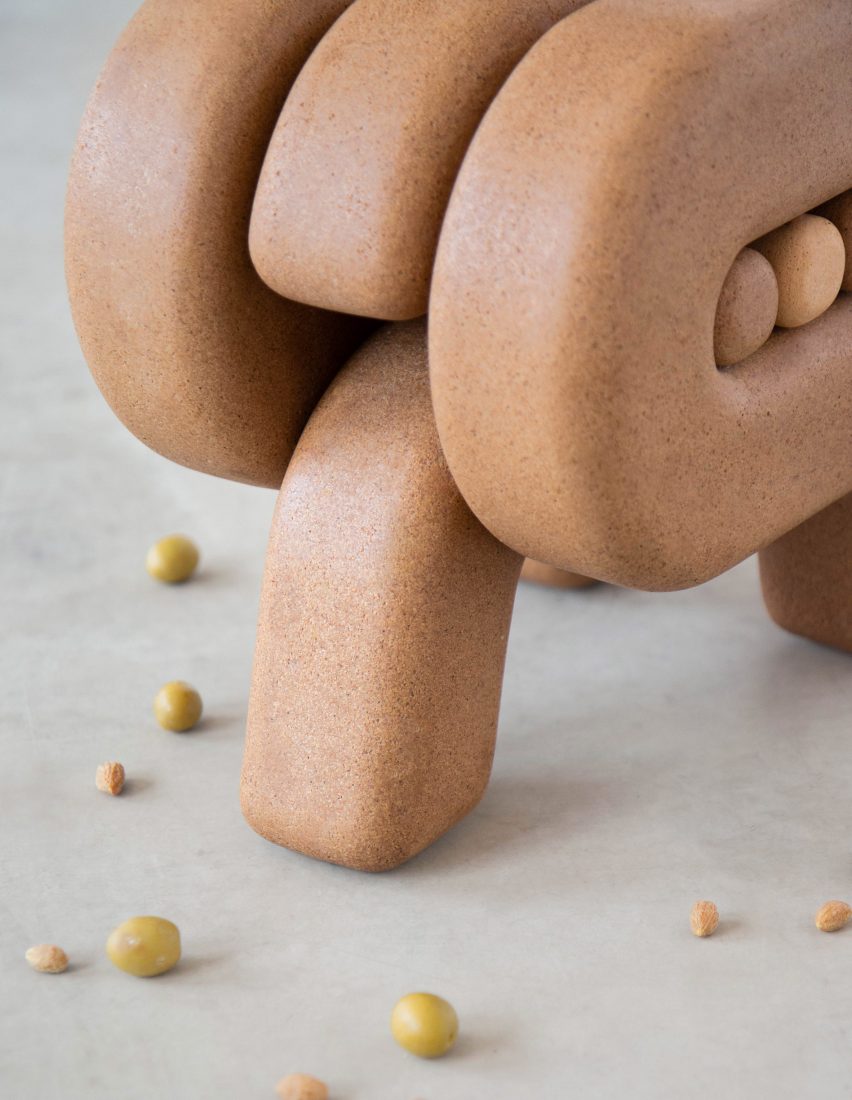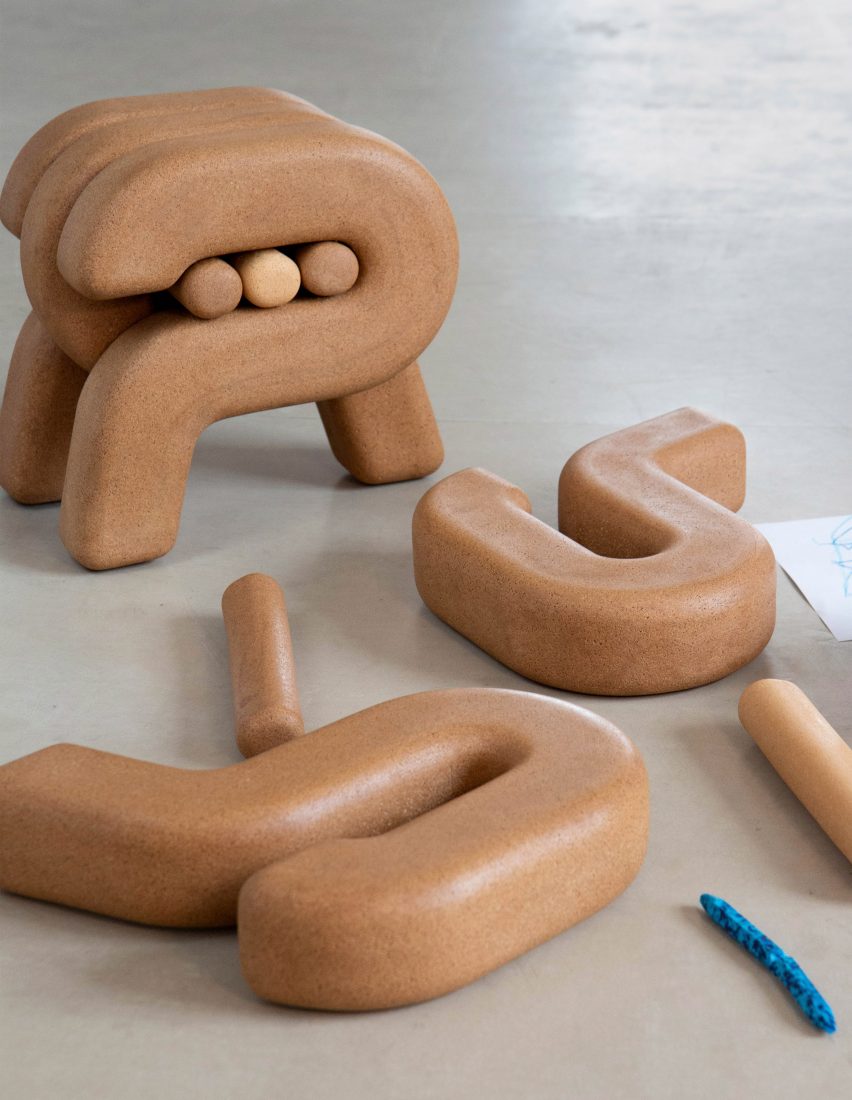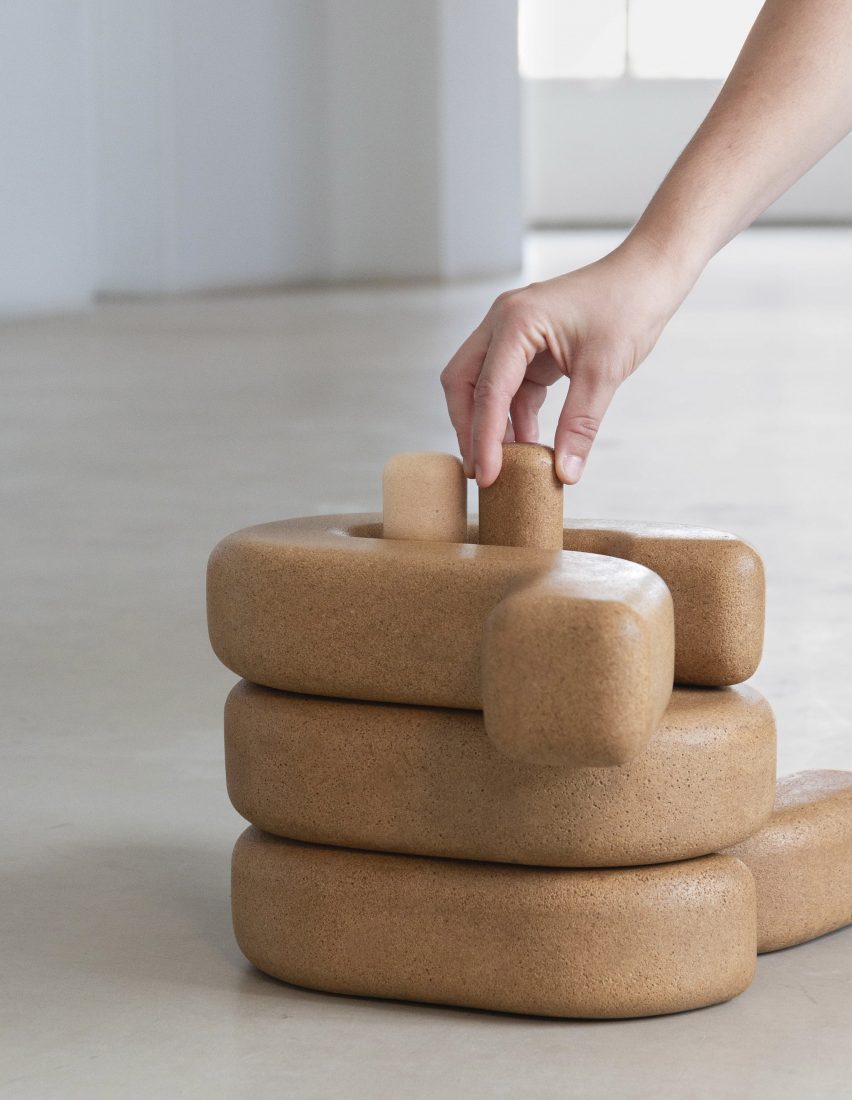Balzar Arquitectos nestles La Casa de los Olivos into Valencian olive grove
Spanish studio Balzar Arquitectos has added a copper-toned family house named La Casa de los Olivos to an olive grove in Valencia, Spain.
Aiming to blend into its site in the town of Quesa, the long and low-lying home has been finished with a red-hued lime mortar that mimics the surrounding soil.
Balzar Arquitectos also preserved as much of the existing planting as possible by designing the house with a linear form that fits within a grid of trees.
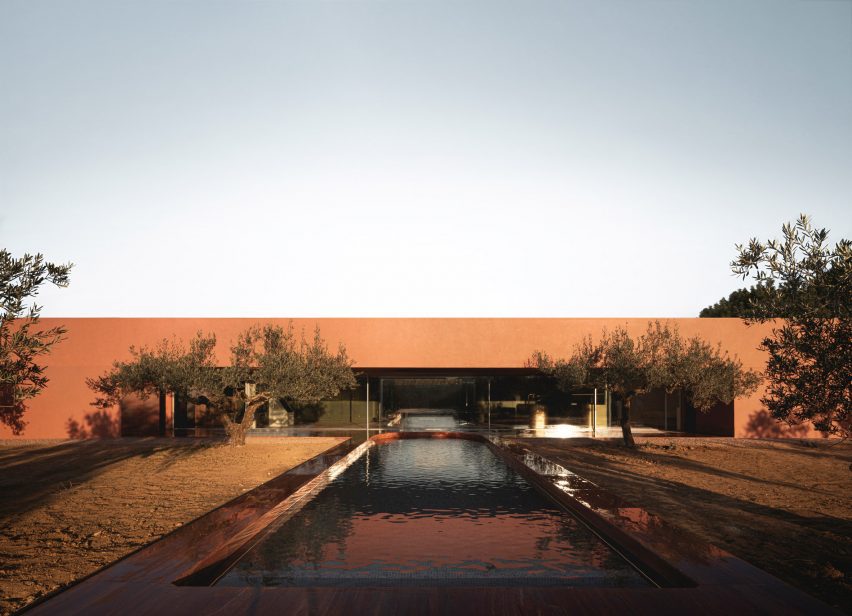
“The landscape was already wonderful as it was, so when it came to the intervention, we wanted to respect this place, trying to keep as many olive trees as possible,” said studio co-founder Laura Moreno Albuixech.
“We wanted to create a dialogue between the natural and the artificial, between the olive trees and the house,” Moreno Albuizech told Dezeen.
Built with a steel frame, the copper-toned home is nestled into the gaps of the eight-by-eight-metre grid of trees. Inside, rooms are arranged across a single floor.
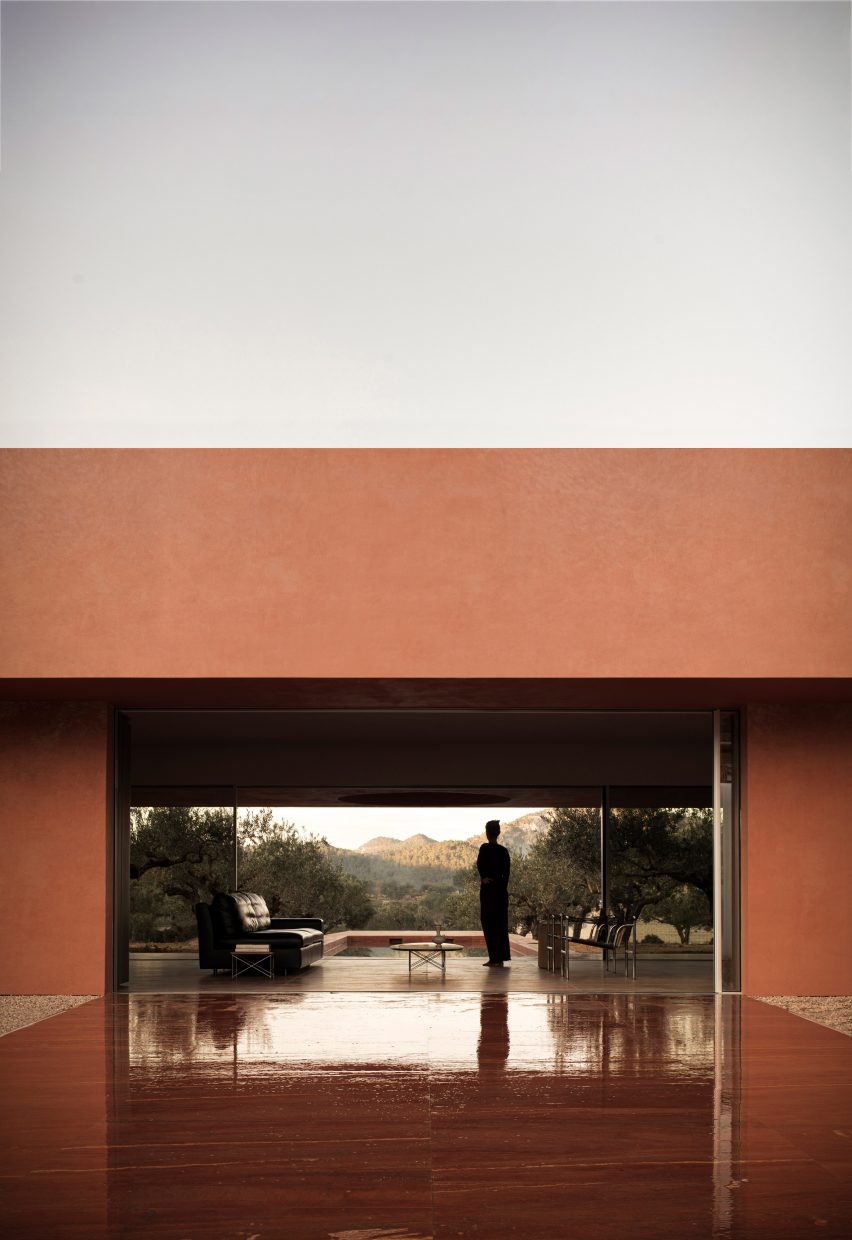
“The olive trees are arranged in a perfect grid of eight by eight metres and this was a key factor in the geometry of the house,” said Moreno Albuixech.
“Both the house and the swimming pool take advantage of the free spaces left in the grid of olive trees and insert themselves between them.”
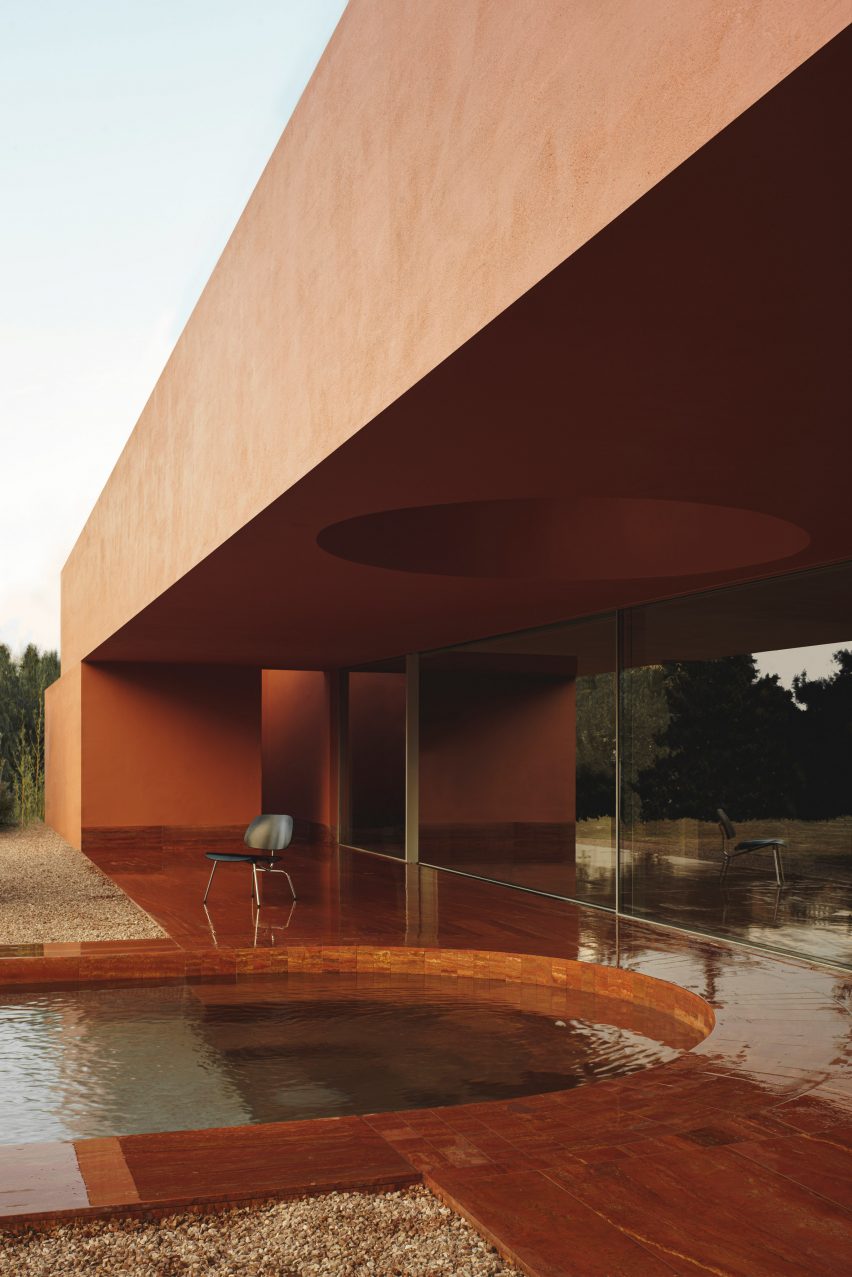
Running down the centre of a gravelled courtyard is a long swimming pool. It extends towards the main building, curving to meet a porch that is covered by an overhang perforated with a circular skylight.
A large glass door separates this porch from the open living space, which extends into a dining area and kitchen with green-toned cupboards and brass surfaces.
“The muted green colour of the leaves of the olive trees was used for the woodwork and the gold of the sun at sunset was reinterpreted in the kitchen with natural brass,” said Moreno Albuixech.
Throughout the home, red walls and accents mimic the soil-informed colour of the exterior, including terracotta-toned floors and Iranian travertine marble surfaces that feature in the bathrooms and interior pool.
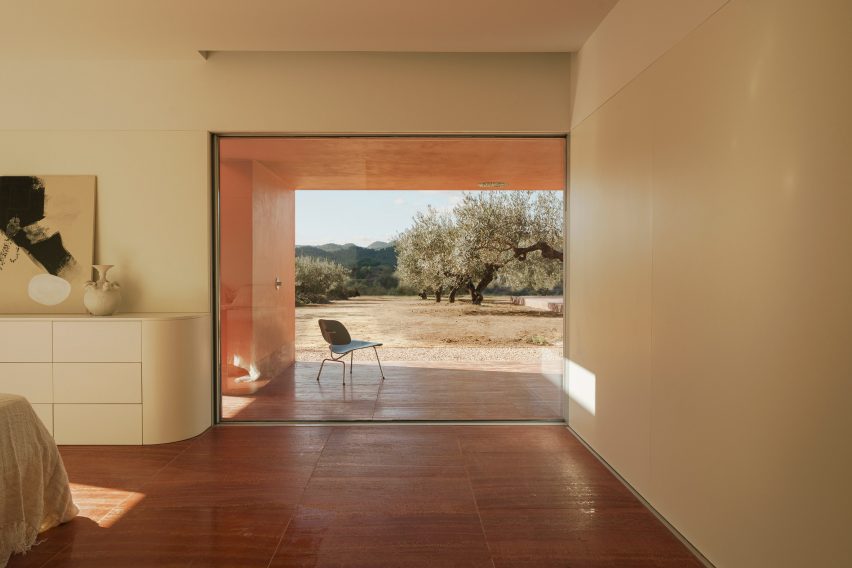
“The choice of materials and colours was clear from the beginning,” said Moreno Albuixech. “Both the clients and we were looking for colours that respected the chromatic range that the plot already had when we visited it for the first time.”
Two ensuite bedrooms branch off from the main living space and open onto private patios that frame views of the surrounding olive trees.
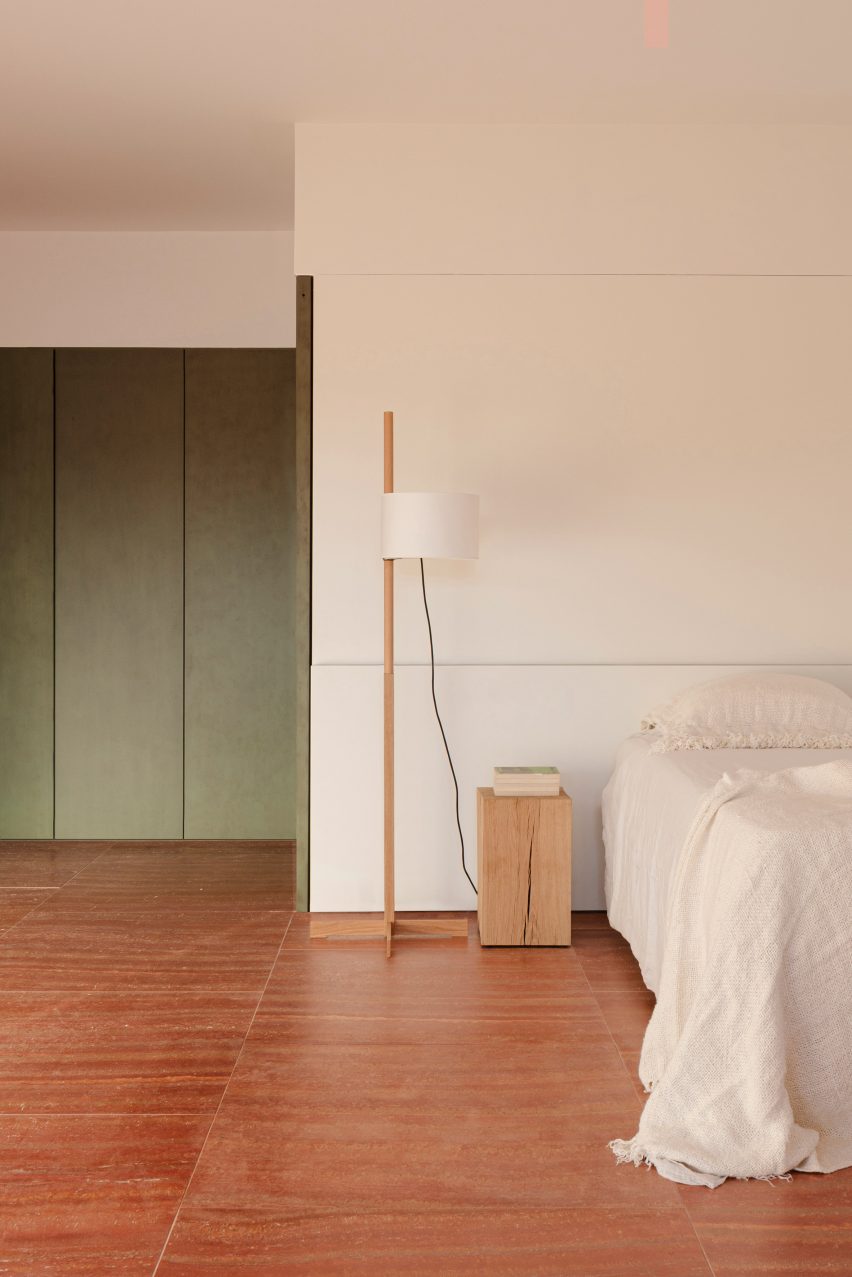
“The home integrates with the rural environment through patios that embrace the existing olive trees and a longitudinal platform that reinforces the linear perspective towards the horizon,” said the studio.
“Through the patios, the olive trees and the wide terrain become part of the dwelling and lives of the people.”
Other Spanish homes recently featured on Dezeen include a narrow home designed for indoor and outdoor living and a house spread across six pavilions arranged around a courtyard.
The photography is by David Zarzoso.

